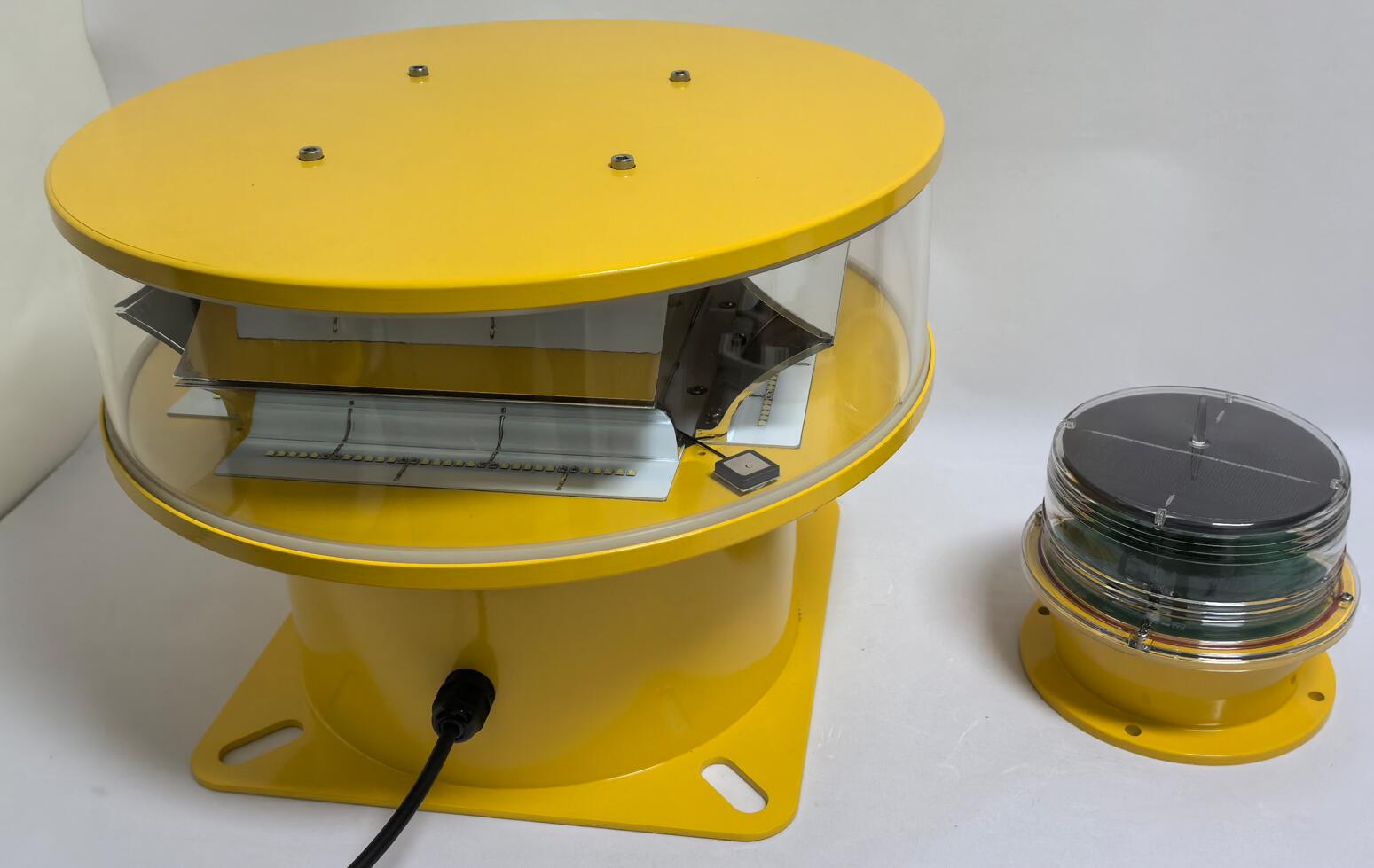In the complex intersection of construction and aviation, tower cranes stand as imposing structures that reach towards the sky. These mechanical behemoths play a vital role in the construction process, but they also pose a significant threat to the safety of aircraft flying in their vicinity. This is where the importance of aviation lights for tower cranes cannot be overstated.
Tower cranes are often located in urban and suburban areas, areas that are frequently traversed by various types of aircraft. With their tall and often wide profiles, they can be difficult to spot from the air, especially during certain times of the day or in adverse weather conditions. Aviation lights are the key to making these cranes visible and distinguishable from a distance.
The design of aviation lights for tower cranes is based on specific principles. Red lights are typically used as the main indicator of an obstruction. Red has a long wavelength and is highly visible even in hazy or low - light conditions. These red lights are usually installed at the highest points of the tower crane, such as the top of the jib and the uppermost sections of the mast. They emit a steady glow that serves as a constant warning to pilots approaching the area. In addition to red lights, white strobe lights are also commonly employed. The strobe effect of the white lights creates a flashing pattern that attracts the attention of pilots more effectively. The combination of red and white lights provides a multi - dimensional visual signal that is difficult to miss.

The installation process of these lights is a meticulous task. It must be carried out in accordance with strict aviation regulations. The position and angle of each light are carefully calibrated to ensure maximum visibility from all directions. For example, the lights are positioned to avoid any blind spots that could potentially hide the crane from an aircraft's view. The installation also takes into account the crane's movement. As tower cranes are often in operation, with the jib rotating and the trolley moving along the jib, the lights need to maintain their visibility throughout these motions. This requires the use of flexible mounting systems and appropriate wiring arrangements to prevent any interference with the crane's normal functioning.
| aviation lights for tower cranes | 45FG3 |
Maintenance of aviation lights for tower cranes is equally crucial. Regular inspections are necessary to check for any damage or malfunction of the lights. Bulbs may burn out, wiring may become damaged due to exposure to the elements or mechanical stress, and power supply systems may experience issues. A dedicated maintenance schedule should be in place to ensure that any problems are identified and resolved promptly. In some cases, automated monitoring systems can be installed to continuously check the status of the lights. These systems can alert maintenance personnel in real - time if a light fails or if there are any abnormal conditions.
The power source for these lights is another important consideration. Many tower cranes are equipped with a combination of primary and backup power systems. The primary power source is usually connected to the construction site's electrical grid. However, in the event of a power outage, backup power, such as generators or battery systems, kicks in to keep the lights illuminated. This redundancy is essential to ensure that the crane remains visible to aircraft at all times. Some modern systems also incorporate energy - efficient technologies, such as LED lights, which consume less power and have a longer lifespan. This not only reduces the energy consumption of the construction site but also minimizes the need for frequent bulb replacements.
From an aviation safety perspective, the presence of properly functioning aviation lights on tower cranes can prevent potentially catastrophic accidents. Pilots rely on these visual cues to identify and avoid obstacles during flight. In busy airspace, where there may be multiple aircraft flying at different altitudes and directions, the clear visibility of tower cranes is essential for safe navigation. For the construction industry, ensuring the proper installation and maintenance of these lights is not only a matter of compliance with regulations but also a responsibility towards public safety. In conclusion, aviation lights for tower cranes are an integral part of the safety infrastructure that bridges the gap between construction activities on the ground and the airspace above. Their effective operation safeguards the lives of both construction workers and those in the aviation industry, allowing construction projects to proceed without endangering the safety of air travel. As technology continues to evolve, further improvements in the design, installation, and maintenance of these lights will undoubtedly enhance the safety and efficiency of this crucial aspect of our built environment.